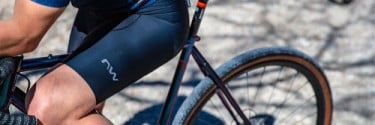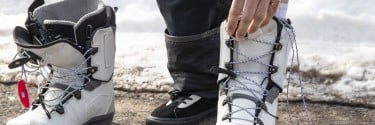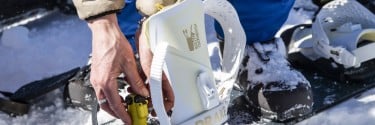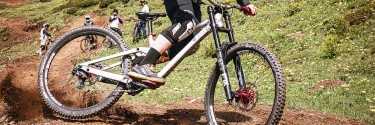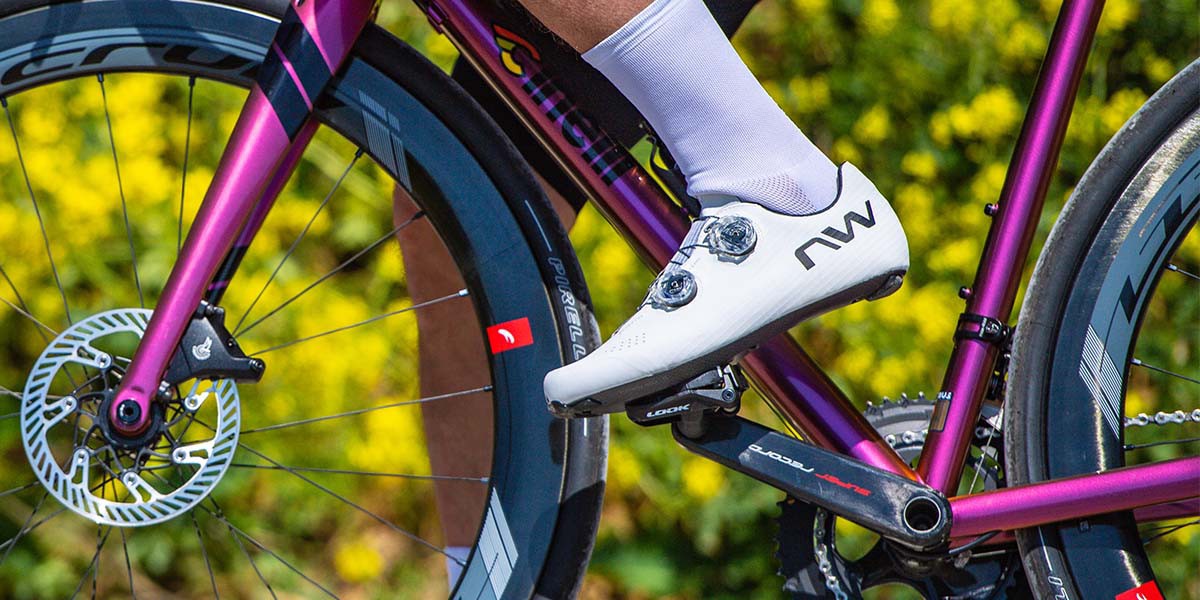
In spite of many cyclists, who consider them a nuisance, cleats are the number one ally for getting the most out of your bike.
If you love pedaling on asphalt, keep reading this article: we'll reveal the aspects that are crucial to consider in order to properly position cleats for your road bike.
Stability and power transmission are played out in a few millimeters
To call them an accessory would be reductive, because cleats are a support without which the stability of the foot on the pedal would be compromised. Let's take a look, below, at why it is essential to familiarize yourself with some of the technical aspects to make your life easier-and your next ride more enjoyable.
In road cycling, the crucial concept, around which the technical design of products gravitates, is the transmission of power from the foot to the pedal.
This thinking is as much of interest to sports equipment and product companies as it is to athletes. "But I don't do competitive racing," you may be thinking. Let's find out together why cleats are important to you, too.
The correct position of cleats defines the well-being, functionality and performance of your pedaling. In this sense, it doesn't matter whether you are a professional or only get in the saddle on Sundays.
So let's first clarify why cleat placement is as essential as it is crucial so that you get the most out of your favorite sport.
Think about how much energy you expend when you pedal--now think that all your force, for it to become thrust and movement, must be transmitted from a small portion of your foot to the pedal. In the efficiency of this small, repeated gesture lies the much-acclaimed transmission of power.
Read also: How to choose the best shoes for your road bike.
Power is determined by many factors
There are many variables that make foot-pedal power transmission optimal.
As mentioned earlier, the pedal contact area is an area where all the power is concentrated. Other key factors must then be considered such as:
- movement;
- balance;
- posture-yes, posture also affects pedaling;
- technique;
- the shoe you wear.
For force transmission to be incisive, you need as few obstacles as possible between your foot and the bike, which is why one of the favored materials for shoe sole construction is carbon, prized for unparalleled strength and lightness.
Check out our racing bike shoe models, starting with the top of the line, the Extreme Pro 3 with the Powershape Carbon 15 Sole, 100% unidirectional carbon with a stiffness index of 15 and Powershape system for arch support, which ensures 100% force transfer to the pedal.
So before answering the question how do I fix my cleats?, it is good to ask yourself:
What aspects do you need to know before attaching cleats to my road shoes?
We identify three. These are cross-cutting concepts that do not change based on the brand of your shoes, cleat and pedal types.
They are three steps that you need to consider even if you will not be fixing cleats to your shoes yourself, because they will help you to become aware of your pedaling and explain your needs to the professional you will go to for fixing.
Three steps to get to know your pedaling
Logic follows the cleat installation mechanism, but it can also apply when choosing your bike shoes. Observe the anatomy of your foot, first while stationary, and, then, gradually get into the details, thinking about your foot in motion, both when you are walking and when you are anchored to the pedal.
Observe your foot
The axis of the pedal should be located at the point of foot support and thrust, identified by most experts between the first and fifth metatarsal heads. You should also locate these points at the shoe. This is the area that affects power transmission and where the cleat will be mounted.
Walk
Observe how you walk. Do you lean your toes outward? Or do you walk with your heels facing outward? Also pay attention to how you lean your weight: do you feel you are resting your weight evenly on the sole? The way you walk is reflected in your pedaling, so the cleat should also be positioned consistently with your foot's posture and anatomy.
Think about how you feel when you pedal
This observation will come in handy when you choose your cleat type, but also when you need to make final adjustments before fixing it. Do you prefer to have clearance on angular rotation? Or do you prefer a fixed cleat?
Now, let's get to the practical side.
How to attach cleats to shoes?
Our advice is to consult a biomechanical expert for an optimal and perfectly tailored fixation.
The above steps have made clear all the implications and all the benefits assured by a job done "properly."
Conversely, if cleats are fitted without considering your specific needs, annoying knee and back pain could arise and, in any case, compromise smooth and efficient pedaling.
If you are an experienced cyclist or are already familiar with the concepts we introduced above and want to mount your cleats yourself, it will be sufficient to attach them to the three holes provided in the soles of your road shoes, following the instructions provided by the manufacturers.
What if there are four cleat holes? If you have a Speedplay cleat, you know what we are talking about: the very shape of this type of cleat is different from the others. In that case, watch our video tutorial to learn how to mount the Speedplay on your Northwave shoes, thanks to our adapter.
Two tricks from the pros
Don't miss our last two tips, which we learned from pro cyclists:
- when you think you've installed your cleats in the right position, don't immediately jump headlong into long days on the bike without a chance to adjust them. Rather, take a short test ride: just a few miles will do. If you should need to adjust the position, make the change and test your feeling in the saddle again.
- when the cleat position is correct and you feel comfortable on the bike, without discomfort or discomfort, mark the position on the sole; this trick may come in handy when you have to detach the cleat for cleaning or maintenance of your shoes. That way, you will already know where to reposition your cleat.
To conclude
As we have seen, adjusting the cleats for your road bike is an important process to ensure a comfortable experience and efficient pedaling.
Remember that spending the right amount of time tuning your cleats will improve your performance and reduce the risk of pain or injury.
Read also: Why choose a Gore-Tex cycling shoe?





